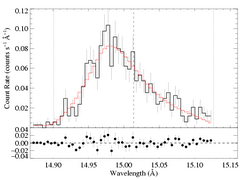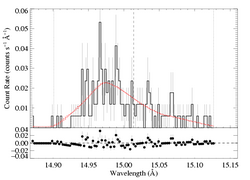Fe XVII 15.014 Angstroms
Non-porous models
Note: Both MEG and HEG are being fit simultaneously
Continuum fit on 14.85:14.90. For n=2, best-fit norm=1.71e-3. The 68% confidence limits on the normalization are approx. +/-0.5e-3. And the best fit is formally a good fit.
Here are the 68%, 90%, and 95% joint confidence limits on taustar and Ro based on fitting the MEG and HEG data together. The filled circle represents the best-fit model, shown as the red histograms on the above two plots.
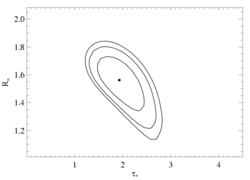
|
New (2Jan09): note that we've now begun plotting these 2-D confidence contour plots in terms of Ro rather than uo.
The literature mass-loss rate implies a fiducial optical depth at the wavelength of this line of about taustar=5.30 (using kappa = 37 cm2 g-1). From the confidence limit contour plot we can see that such a high value is ruled out. If we force a non-porous model to have this optical depth value, here is the best-fit model.

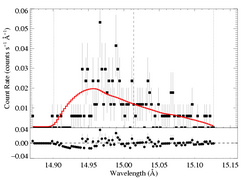
|
[14.87:15.13]
vinf=2250 β=1 powerlaw continuum, n=2; norm=1.71e-3 q=0 hinf=0 taustar=5.30 uo=0.990 +/- (0.665:0.990) norm=5.36e-4 +/- (5.16e-4:5.57e-4) rejection probability = 97% (C=344.36; N=308) |
This fit is ruled out only at 97% confidence, formally. But the fit is clearly poor. And the low taustar fit - the global best-fit model - shown at the top of this page is preferred over this model with an even higher level of confidence (>99.99%), with ΔC > 64. Here are the two models plotted together:
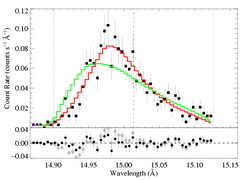
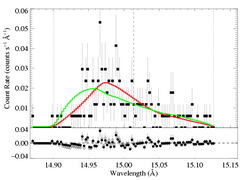
|
Next, we fit isotropic porosity models to the data. And after that, anisotropic porosity models.
Back to main page.
last modified: 13 February 2009
